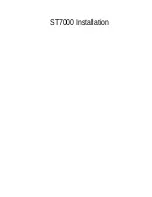
Detect the disconnection status of test cable or short circuit of core and
shield with a multimeter; determine whether 220V input power is too high or
too low and whether grounding is in good contact.
Measure the reference capacitor or tested capacitor with known capacitor
and dielectric loss. If the result turns out to be correct, then it can be concluded
that the instrument has no problem.
Pull off all test cables to conduct voltage increase in an idle state. If the
instrument fails to work normally, it has gone wrong.
Measure low voltage output after starting CVT measurement, 2 ~
5Vvoltage should appear, otherwise the instrument has gone wrong.
XI. Instrument detection
1. Detect with reference loss tester
Connect the reference loss tester with a shielded cable with plug. If the
accuracy of loss tester is unwarranted, take a comparison method for detection.
It is suggested to take 2801 electric bridge or other precision electric bridge as
a referenced standard. Instrument should select “internal reference” and “RC
cascade tested article” and power frequency 50Hz or 50Hz with regard to
frequency mode.
2. Detect with QSJ3: Connect QSJ3 with shielded cable with plug, select
“UST/E-CN/E-UN measurement, current ratio is represented by Cx: Cn and
set an appropriate value for Cn.
3. Anti-interference capacity
Set a loop circuit and inject quantified interference current to the
instrument.
Note:
1) Please be noted that the loop circuit may be a part of tested article.
2) As the instrument starts, the 220V power supply circuit may produce a
measurement frequency component. If the frequency component enters into
20




































